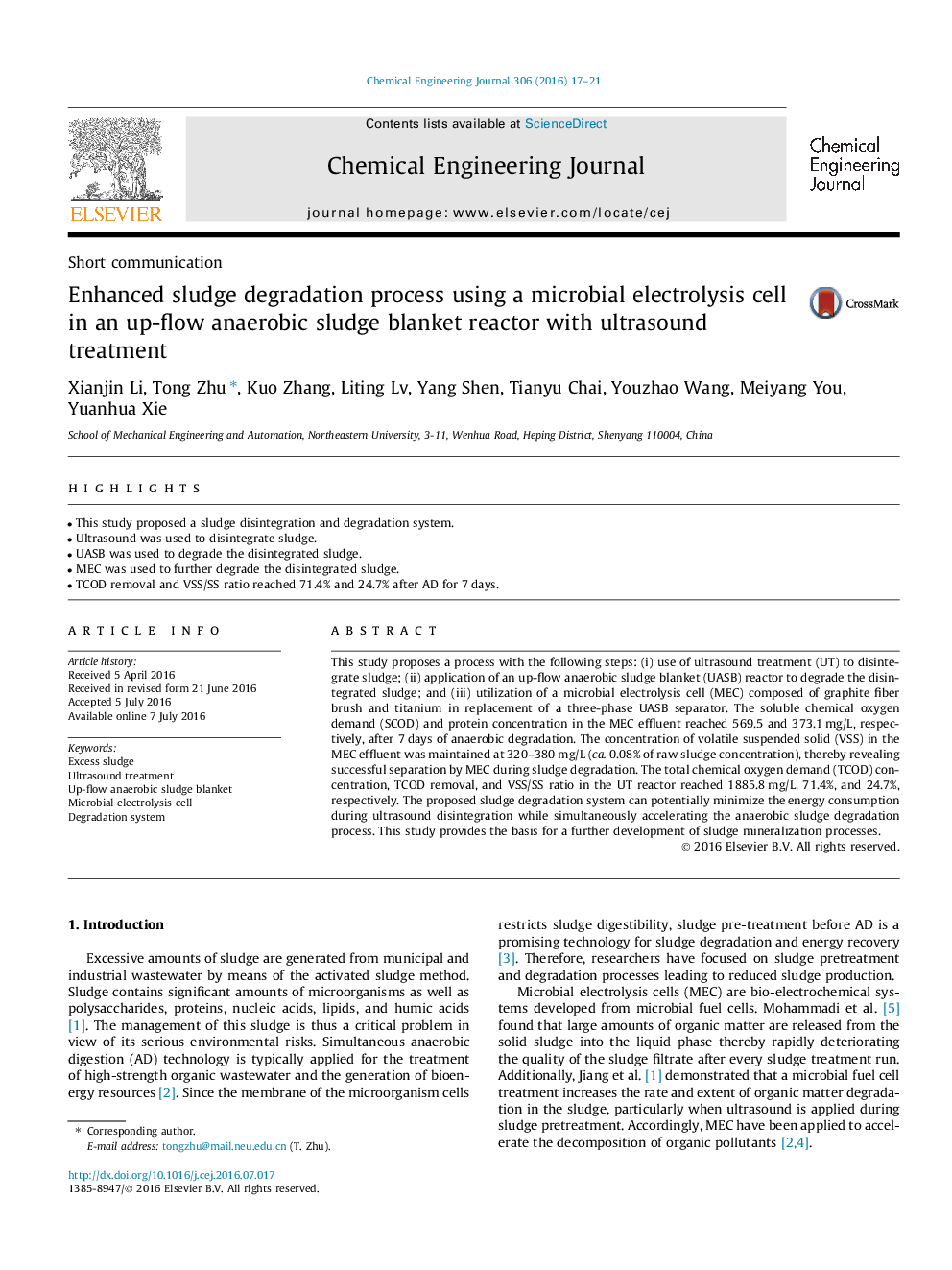| کد مقاله | کد نشریه | سال انتشار | مقاله انگلیسی | نسخه تمام متن |
|---|---|---|---|---|
| 145290 | 456336 | 2016 | 5 صفحه PDF | دانلود رایگان |
• This study proposed a sludge disintegration and degradation system.
• Ultrasound was used to disintegrate sludge.
• UASB was used to degrade the disintegrated sludge.
• MEC was used to further degrade the disintegrated sludge.
• TCOD removal and VSS/SS ratio reached 71.4% and 24.7% after AD for 7 days.
This study proposes a process with the following steps: (i) use of ultrasound treatment (UT) to disintegrate sludge; (ii) application of an up-flow anaerobic sludge blanket (UASB) reactor to degrade the disintegrated sludge; and (iii) utilization of a microbial electrolysis cell (MEC) composed of graphite fiber brush and titanium in replacement of a three-phase UASB separator. The soluble chemical oxygen demand (SCOD) and protein concentration in the MEC effluent reached 569.5 and 373.1 mg/L, respectively, after 7 days of anaerobic degradation. The concentration of volatile suspended solid (VSS) in the MEC effluent was maintained at 320–380 mg/L (ca. 0.08% of raw sludge concentration), thereby revealing successful separation by MEC during sludge degradation. The total chemical oxygen demand (TCOD) concentration, TCOD removal, and VSS/SS ratio in the UT reactor reached 1885.8 mg/L, 71.4%, and 24.7%, respectively. The proposed sludge degradation system can potentially minimize the energy consumption during ultrasound disintegration while simultaneously accelerating the anaerobic sludge degradation process. This study provides the basis for a further development of sludge mineralization processes.
Journal: Chemical Engineering Journal - Volume 306, 15 December 2016, Pages 17–21
